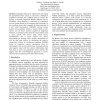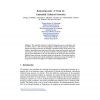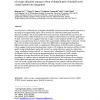25 search results - page 3 / 5 » Biologically Inspired Neural Controllers for Motor Control i... |
ICRA
2002
IEEE
13 years 10 months ago
2002
IEEE
Sampling multisensory information and taking the appropriate motor action is critical for a biological organism’s survival, but a difficult task for robots. We present a Neurally...
AMS
2007
Springer
13 years 11 months ago
2007
Springer
Abstract Walking, running and hopping are based on self-stabilizing oscillatory activity. In contrast, aiming movements serve to direct a limb to a desired location and demand a qu...
ICRA
2007
IEEE
13 years 11 months ago
2007
IEEE
– This paper presents the design and initial results for an autonomous jumping microrobot. At the millimeter size scale, jumping can offer numerous advantages for efficient locom...
DAGSTUHL
2003
13 years 6 months ago
2003
We embodied networks of cultured biological neurons in simulation and in robotics. This is a new research paradigm to study learning, memory, and information processing in real tim...
AROBOTS
2010
13 years 5 months ago
2010
Locusts possess a bilateral pair of uniquely identifiable visual neurons that respond vigorously to the image of an approaching object. These neurons are called the lobula giant m...



